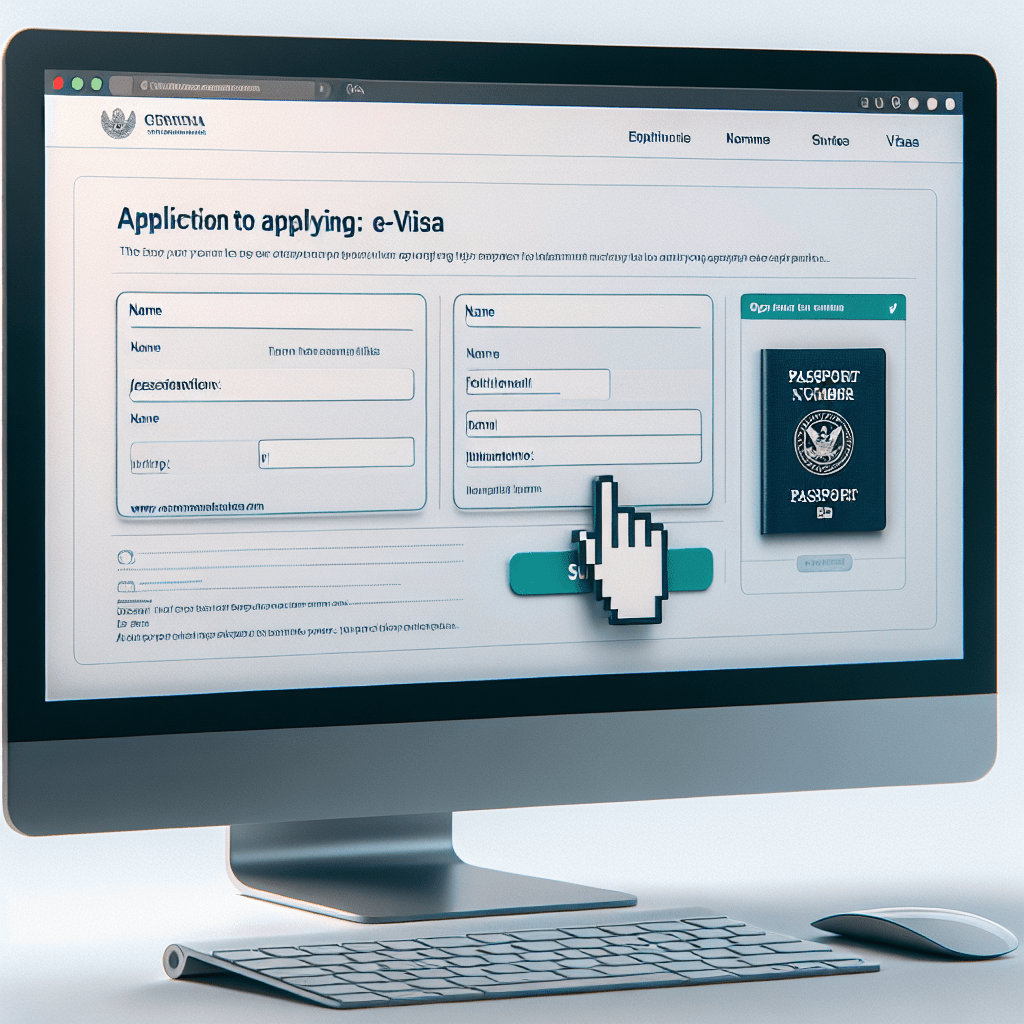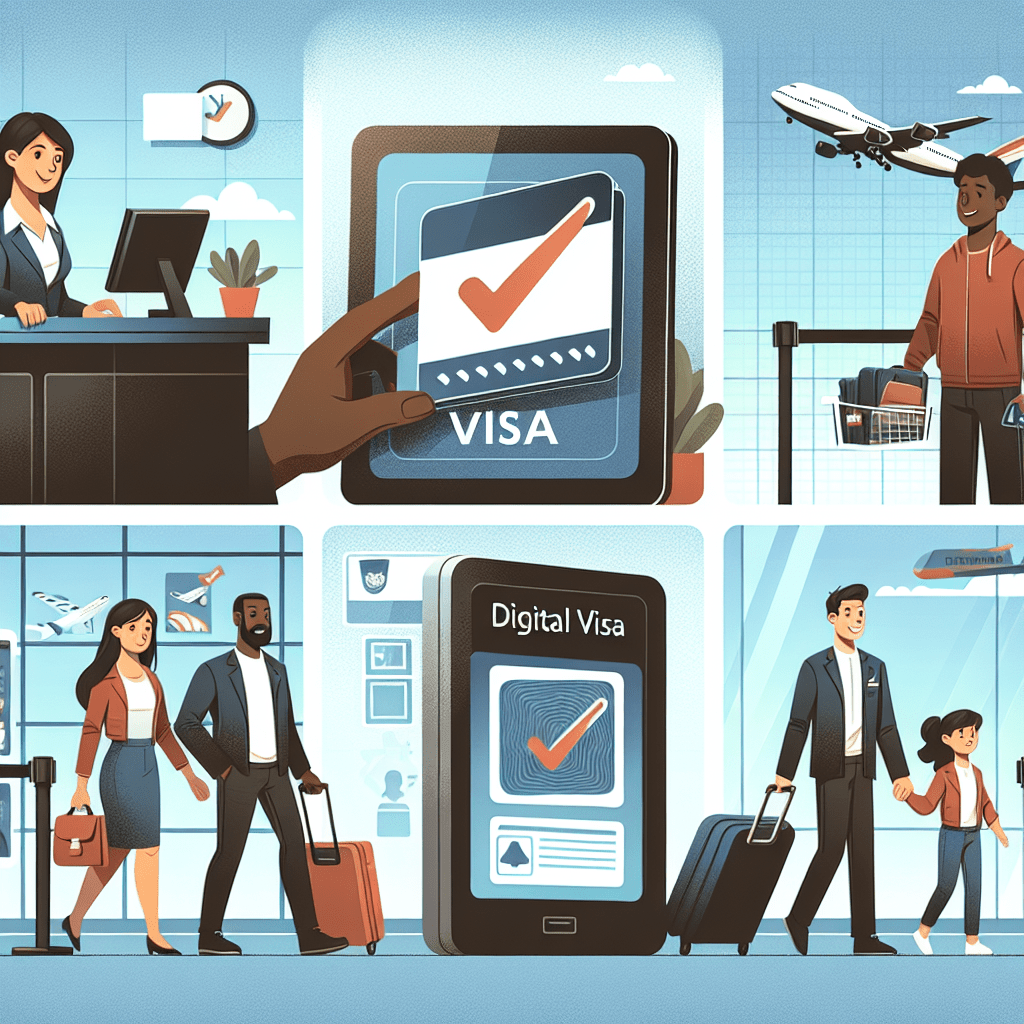How do I get an electronic visa?


An electronic visa, commonly known as an e-Visa, is a digital equivalent of a traditional paper visa. That small stamp marked in your passport at the immigration counter that grants you entry into a foreign territory has gone virtual. Instead of a physical stamp, your visa details are stored in the immigration’s system electronically. With the rise of technology and increased globalization, nations worldwide have shifted to this innovative approach of visa issuance for swift, extricable, and efficient processing. It not only facilitates the visa acquisition process for travelers but also strengthens the security apparatus for immigration authorities.
dramatically, paving the pathway towards a digital future in global immigration.
Yet, despite its growing popularity, many potential travelers still find themselves bewildered in the maze of e-Visa procurements. Therefore, this article serves as a valuable resource providing a comprehensible guide on how to obtain an e-Visa. We aim to illuminate the intricacies of e-Visa applications, focusing on common procedures, requirements, and what to expect when applying for an Electronic Visa.
Understanding Electronic Visa
Definition of Electronic Visa
An Electronic Visa, or e-Visa, is an official document that permits entry into and travel within certain countries. The process is usually conducted via an online visa system or electronic immigration system. It is an increasingly prevalent manner of visa issuance, considering the wider adoption of digital methods not just in daily life but distinctly in international travel.
Contrasting the traditional paper visa, which is manually stamped or attached into your passport at an embassy, an e-Visa is digitally tied to your passport number. The foremost distinction between a traditional visa and an e-Visa is its process of application and issuance. While the former requires physical visits to consulates or embassy, the latter is entirely processed online, making it more expedient and accessible.
Importance of an Electronic Visa
E-Visas play an essential role in the realm of international travel. With an Electronic Travel Visa, you evade long queues at the embassy and speed up the process of Visa Approval Online. The electronic visa system provides a seamless, efficient, and easily accessible platform for visa applications.
Traveling without a valid e-Visa or traditional visa can lead to denial of entry, deportation or even bans from future travel to that country, depending on the country’s immigration law. Thus, having a valid e-Visa is crucial to ensure a hassle-free journey.
Countries that provide e-Visas

Many countries worldwide are now adopting the e-Visa system to simplify the visa application process. This system, otherwise known as a Digital Travel Authorization, reinforces security measures at borders along with a substantial reduction of paperwork. Countries including Turkey, India, Australia, and Cambodia, to name just a few, have roped in this e-Visa system – their online processes vary by nation, but they invariably require personal, travel, and eligibility information to process the electronic visa application.
For instance, India’s e-Visa process involves three steps: application, payment, and receipt of the Electronic Entry Permit via email. On the other hand, the Australian Electronic Tourist Visa requires you to have a valid passport, an email address, and a valid credit card for the payment of a service fee.
While differences abound, they typically include streamlined application forms and expedited approval processes compared to traditional visas. When exploring these options, it’s essential to recognize the specific entry requirements dictated by your destination choice, as each has tuned their Online Visa Application to best suit their distinctive needs and security measures.
Process of Applying for an Electronic Visa
Pre-Requisites
Delving into the realm of Electronic Visa applications necessitates a clear understanding of the particular prerequisites, whether they be Digital Travel Authorization or Electronic Entry Permits. Different countries possess diverse requirements, but the underlying notions stay the same. A legitimate passport with a minimum six months’ validity is a universal prerequisite for all electronic visa applications.
Other common specifics may include information about one’s planned travel, such as flight details and hotel reservations. More often than not, digital photographs and proof of sufficient funds for the period of stay may be necessary. Country-specific prerequisites could be Yellow Fever Vaccination certificates, invitation letters, or filled out forms intrinsic to a particular Electronic Immigration System.
It’s pivotal to acknowledge potential disqualifications to an e-Visa application. A history of criminal activity, deportation, or visa evasion could represent substantial hurdles, and professional advice should be sought in these situations.
Application Process
Navigating the Online Visa System might appear inordinate initially, but a step-by-step analysis can immensely simplify the process. The e-Visa Processing typically begins with a trip to the issuing country’s official Government website or affiliated websites that manage their e-Visa applications.
You’ll find an online form where you input personal information such as full name, passport details, date of birth, nationality, and more. Some applications might require more intra-personal information or past travel history. Always proofread entries to avoid disputes that may slow down the process or lead to a denied application. You can then proceed to upload necessary documents, in the required format and size. Lastly, the application process entails a fee. Once the payment’s made, the application is submitted and Virtual Visa Approval awaits.
Typically quite straightforward, it’s nonetheless vital to appraise each part of the process carefully. Any misguided information can lead to visa denials, forcing you to restart the entire process over.
After Application

Once the online application has been submitted, anticipation ensues. It’s normal for varied time frames to be involved in the Visa Approval Online phase. Some might sanction the Electronic Travel Visa within days whereas others might take weeks. So, patience is key. Often, these decisions are communicated via email or can be checked by entering your application ID on the website.
For approved applications, it’s essential to procure a print of the Electronic Tourist Visa, or whichever visa type applied for, to present at the airport. On a visa denial, it’s advisable to reapply or engage the embassy to understand why it was rejected so future applications can be corrected. Remember, a refusal doesn’t close all doors; understanding and addressing the concern can mean successful applications on future attempts.
Maximizing Benefit from an Electronic Visa
Efficient Use of electronic visa
Obtaining an e-Visa is only the first step in your international voyage. Practical application during travel forms the crux. Ensure to carry a copy of your Electronic Travel Visa at all times. Although your e-Visa or Electronic Entry Permit is electronically attached to your passport, having a printout helps during airline checking and immigration clearance. It’s also a good idea to keep a digital copy available on your phone or email, just in case.
Understanding provisions of your electronic visa is paramount to avoid legal issues. It’s crucial to know the nature of your visa – tourist, transit, business, or study. A violation of these provisions, like overstaying your visa duration or participating in activities not covered by your e-Visa category, could lead to serious consequences, including deportation and access bans. Being cognizant is the best advice for maximizing the benefits of your Online Visa System.
Overcoming Potential Issues
While electronic visa applications are designed to be user-friendly and streamlined, sometimes hindrances can occur. Common issues could be input errors during the application, technical glitches, delayed response, or even visa rejection. Swift resolution includes rechecking the entered information, reattempting after some time, or reaching out to the website’s customer support or respective embassy. Prevention is primarily in ensuring slow and steady filling out of the digital form, understanding the application’s various sections, and cross-verifying all data before final submission.
Also crucial is ensuring that you don’t get ensnared by fake visa websites. Always use approved Government portals or recognized and affiliated websites for your e-Visa application to evade scams and misinformation. It’s also wise to keep abreast of recent visa scams and regularly update your knowledge about the e-Visa guidelines of your destination country. Safeguarding begins from the first click of your E-Permit Application.
Insights into Future Trends
The future of the Electronic Travel Visa is undeniably bright. As countries progressively digitize their immigration systems, the e-Visa landscape is projected to experience exponential growth and evolution. We might witness faster application processing, virtually instantaneous authorizations, and even entirely new types of e-Visas in the future. As a traveler in this digital era, it is advantageous to equip yourself with the latest updates in e-Visa policies and procedures.
As you plan your journey, it’s beneficial to regularly check official visa websites and trusted travel blogs that provide updated information about changes in visa policies. As a part of the global travel community, let’s align with these digital trends, ensuring the best use of Online Visa Applications in making your travel dreams a seamless reality!
Wrapping it Up: The World of e-Visas

Navigating the intriguing world of e-Visas can seem an intricate maze initially. Still, equipped with the right knowledge and understanding, it becomes less daunting and more a passport to uncharted adventures. An e-Visa, or an Electronic Visa, is an online method of getting travel authorization, not too different from your traditional paper visas, just without the long lines or incessant paperwork.
Your e-Visa is a vital part when stepping into foreign territories. Understanding the rights and privileges it confers, along with the responsibilities it necessitates, ensures smooth, worry-free travel. Therefore, understanding the various components of obtaining and efficiently utilizing an e-Visa under an Electronic Immigration System is a necessary passage for any modern-day traveler.
The shift towards e-Visas is without a doubt, a stride towards global accessibility, offering options from Electronic Tourist Visas to business and transit visas. With the continued global adoption of e-Visas, navigating foreign travel is becoming progressively streamlined. Those airport and consulate lines are a thing of the past with this E-Permit Application, fulfilling wanderlust at the click of your fingertips.
Finally, it’s safe to say that attaining and aptly utilizing an e-Visa can be the key to unlock seamless international travel. Whether it’s your first time applying or simply brushing up on the process, each endeavor in following this path is a stride towards a digital global future. Let’s explore this journey with informed courage, a love for travel, and the freedom that the world of e-Visas so willingly offers!